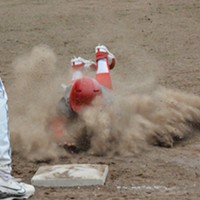[
{
"name": "Top Stories Video Pair",
"insertPoint": "7",
"component": "17087298",
"parentWrapperClass": "fdn-ads-inline-content-block",
"requiredCountToDisplay": "1"
}
]
Empires always fall. After 200 glorious years (the Pax Romana), the Roman Empire took another two centuries to decline into obscurity. Despite his boast of an empire that would last 1,000 years, Hitler's Third Reich collapsed at the end of WWII. The British Empire, on which "the sun never set," surrendered to the reality of a new, democratic world order, ceding sovereignty to some 20 countries in as many years. The reasons for the failure of empires are many and various: conquest, plague, over-extended supply lines, monetary inflation and climate change. Usually more than one conspire to bring about the end.
The fall of the Khmer Empire, centered in present-day Cambodia, mostly resulted from an entirely preventable environmental catastrophe that offers lessons for us here and now in Northern California. From around 1150 to 1320 AD, the Khmer Empire was the most powerful political entity in Southeast Asia. In 1200, its capital in the Angkor complex was the world's largest pre-industrial urban complex, home to some quarter of a million people. The singular fame of Angkor Wat ("city temple"), commissioned by king Suryavarman II, who reigned from 1113 to 1150, derives from both its excellent state of preservation and its size — it's the largest religious structure in the world. A few years later, King Jayavarman VII outdid his predecessor by building the nearby city of Angkor Thom, his extraordinary stone homage to the Buddhist bodhisattva Avalokitesvara ... or perhaps to himself. Historians debate whether the 200 gigantic carved faces represent Jayavarman VII or a divinity.
So what happened? Why did the prosperous and vast empire collapse? Most archeologists believe the Khmers degraded their environment to the point where it could no longer support the populace. Angkor's prosperity can be summed up in one word: water. Without supplementary irrigation, the alluvial flatlands of Southeast Asia support only one rice crop per year (rice being the staple food there). In the 10th century, the Khmers created a vast system of reservoirs, moats and canals to store monsoon rains for use throughout the year, tripling the rice yield. Population growth led to demand for lumber, and unfortunately the best timber was located in the Angkor catchment area. With the trees gone, slopes eroded and the irrigation system silted up. Within a century, the empire was no more.
Sound familiar? Here in Humboldt County, we can see echoes of that far away, long-ago assault on nature. The Mattole was once a prime salmon spawning river. Extensive logging in its upper catchment area is the main reason for degradation of the riverbed, resulting in the near-extinction of Mattole coho (see Natalie Arroyo's "Last Call for Coho," July 7, 2011). The Mad River was renowned for 60-pound chinook just 80 years ago. My "Baron vs. Mountain" story outlines the near-destruction of Klamath fisheries by hydraulic mining operations (Sept. 8, 2011 and Sept. 15, 2011).
Actions have consequences. Over-exploitation of our natural resources may not be the only factor that brings down the American Empire (what's left of it), but it certainly won't make our future any more tenable.
Barry Evans ([email protected]) and his wife Louisa Rogers will give a presentation on Angkor Wat and other highlights of their recent Southeast Asia trip at an OLLI class on April 8. 826-5880.
Speaking of...
Comments
Showing 1-1 of 1
more from the author
-
A Brief History of Dildos
- Apr 11, 2024
-
Eclipse!
- Mar 28, 2024
-
The Little Drone that Could
- Mar 14, 2024
- More »
Latest in Field Notes
Readers also liked…
-
Trouble on the Line: The Reality Part 2
- Nov 3, 2022





































